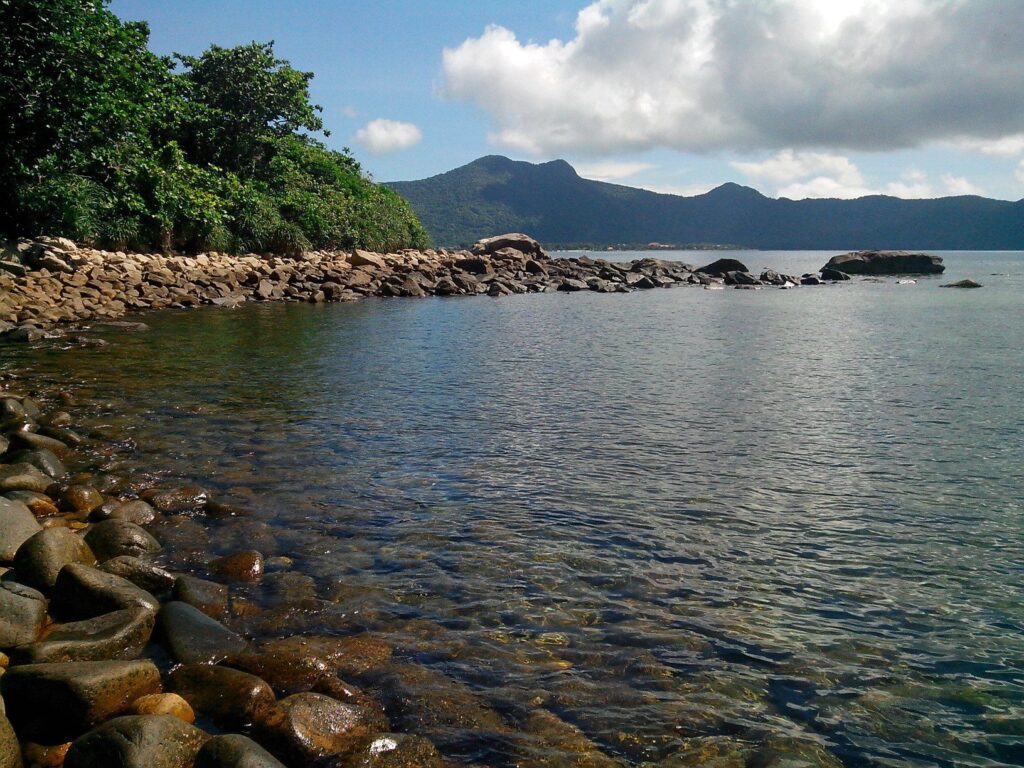After suffering repeated defeats, Lord Nguyễn Ánh planned to send his son, Prince Hội An (commonly known as Prince Cải), to France with the missionary Pigneau de Béhaine as a political hostage. In return, Nguyễn Ánh hoped to obtain military support from King Louis XVI of France. The Nguyễn court even pledged to cede control of the Đà Nẵng seaport and the Côn Đảo archipelago to France. In exchange, France would provide four warships, 1,200 soldiers, 200 artillery gunners, and 250 African troops to help Nguyễn Ánh reclaim power from the Tây Sơn.
When Lady Phi Yến — Prince Cải’s mother — learned of this plan, she strongly opposed sending her son abroad and condemned Nguyễn Ánh’s intention to “sell out the country in exchange for personal gain.” She advised him:
“The conflict with Tây Sơn is our internal matter. I believe Your Lordship should not rely on foreign powers. Even if we defeat the Tây Sơn, it will bring no glory, only future troubles.”
Enraged by her words, Nguyễn Ánh suspected that she was secretly colluding with the Tây Sơn. Had his court officials not intervened, she would have been executed. Instead, he ordered that she be imprisoned in a rocky cave on a deserted island southwest of the archipelago — now known as Hòn Bà Island.
Shortly after confining Lady Phi Yến, Nguyễn Ánh received news that Tây Sơn forces were approaching Côn Đảo. He fled with his entourage, leaving Phi Yến behind. At that time, their only child, Prince Hội An, cried and begged to remain with his mother. When he refused to go, Nguyễn Ánh said to his officials:
“This child may one day side with his mother and betray me. If I do not eliminate him now, he may become a traitor.”
Nguyễn Ánh seized Prince Cải and threw him into the sea, saying:
“I grant you permission to follow your mother!”
According to legend, the prince’s pet black tiger leapt into the water in an attempt to save him, but it was too late. The prince’s body slowly sank, and the tiger swam ashore. Three days later, the body washed up at Cỏ Ống Village, where the tiger pulled the prince ashore, dug a deep grave with its forepaws, and buried him. To this day, the village still preserves the prince’s grave and shrine, known as Thiếu Gia Miếu.
Folk tales recount that in the forest, the black tiger encountered the prince’s pet white gibbon. The gibbon guided the tiger to Hòn Bà Island, opened the cave, and brought Lady Phi Yến to her son’s grave. These legends, passed down for centuries, are remembered in the folk verse:
“The wind carries the cải plant back to heaven,
While rau răm remains to endure bitterness and sorrow.”
The Tragic Night in An Hải Village
In the tenth lunar month of 1785, An Hải Village (where An Sơn Shrine stands today) held a ceremonial purification festival and invited Lady Phi Yến to participate. That night, Biện Thi, an immoral butcher, attempted to assault her. He had barely touched her hand when she cried out, alerting the villagers, who immediately arrested him.
That same night, to protect her honor, Lady Phi Yến took her own life.
An Sơn Shrine – A Symbol of Virtue and Loyalty
Lady Phi Yến was laid to rest in An Hải Village. In gratitude and admiration for her unwavering chastity and loyalty, the villagers built An Sơn Shrine in her honor. Over the centuries, despite many historical changes, the shrine has remained in its original location, preserving its traditional structure.
Every year, on the 18th day of the 10th lunar month, the people of Côn Đảo hold a solemn vegetarian memorial ceremony to honor the virtuous Lady Phi Yến.








